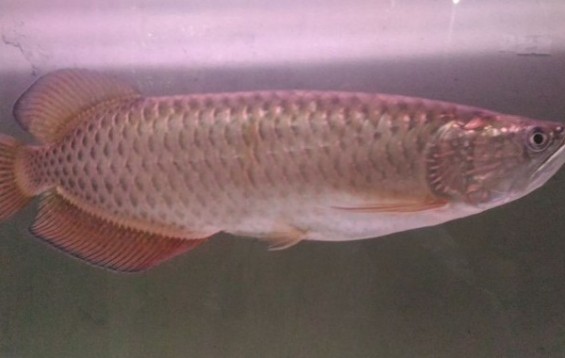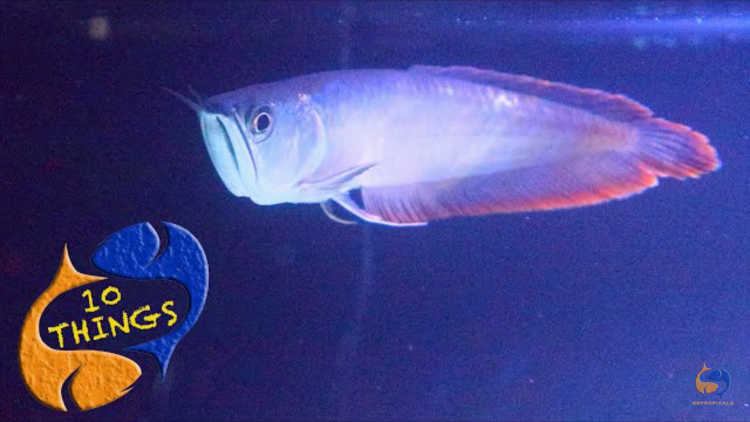- Name:
Pearl Arowana
- Family: Osteoglossidae
- Species: Arowana
- Scientific Name: Scleropages formosus


More Details
General info about Pearl Arowana
The Pearl Arowana is a freshwater fish species known for its pearl-like scales that shine in various colors such as silver, gold, and green. They have elongated bodies with a large mouth, sharp teeth, and two barbels. They can grow up to 90cm in length and weigh up to 5 kg.
Pearl Arowanas require a large tank with a capacity of at least 250 gallons to allow for their size and swimming needs. They require excellent water quality with a pH range of 6.5-7.5 and a water temperature of 25-30°C. The aquarium should be decorated with plants, rocks, and driftwood to mimic their natural environment. They are sensitive to sudden changes in water conditions, so regular water changes and filtration are essential.
Pearl Arowanas are solitary fish and prefer to live alone or in pairs. They are known to be aggressive towards other fish species and should be kept with caution. They are active swimmers and require a lot of swimming space.
The Pearl Arowana is classified as a vulnerable species due to overfishing and habitat loss in their natural environment. They are also sought after by collectors for their unique and attractive appearance, leading to illegal trading and poaching. As a result, the international trade of Pearl Arowanas is regulated under the Convention on International Trade in Endangered Species (CITES). It is essential to ensure that they are acquired through legal and sustainable means to protect the species from extinction.
Pearl Arowana Diet & Nutrition
In the wild, Pearl Arowanas feed on small fish, insects, crustaceans, and other aquatic animals. In captivity, they are fed a diet of pellets, live or frozen fish, shrimp, and worms.
Breeding & Spawning Pearl Arowana
Pearl Arowanas are difficult to breed in captivity and require specific conditions, such as warm water temperature, low light, and plenty of hiding places. They are known to be mouthbrooders, where the male carries the eggs in his mouth until they hatch.
Pearl Arowana Origin
The Pearl Arowana is native to Southeast Asia, particularly in the Mekong basin and the Chao Phraya River system. They prefer slow-moving rivers, flooded forests, and swamps with plenty of vegetation and hiding places. They can also be found in artificial environments like fish farms and aquariums.
Relevent Articles
Original Detail
| Name | Species | Family | Scientific Name | More Detail | Added by |
|---|---|---|---|---|---|
| Pearl Arowana | Arowana | Osteoglossidae | Scleropages formosus | The Pearl Arowana is a freshwater fish species known for its pearl-like scales that shine in various colors such as silver, gold, and green. They have elongated bodies with a large mouth, sharp teeth, and two barbels. They can grow up to 90cm in length and weigh up to 5 kg. Pearl Arowanas require a large tank with a capacity of at least 250 gallons to allow for their size and swimming needs. They require excellent water quality with a pH range of 6.5-7.5 and a water temperature of 25-30°C. The aquarium should be decorated with plants, rocks, and driftwood to mimic their natural environment. They are sensitive to sudden changes in water conditions, so regular water changes and filtration are essential. Pearl Arowanas are solitary fish and prefer to live alone or in pairs. They are known to be aggressive towards other fish species and should be kept with caution. They are active swimmers and require a lot of swimming space. The Pearl Arowana is classified as a vulnerable species due to overfishing and habitat loss in their natural environment. They are also sought after by collectors for their unique and attractive appearance, leading to illegal trading and poaching. As a result, the international trade of Pearl Arowanas is regulated under the Convention on International Trade in Endangered Species (CITES). It is essential to ensure that they are acquired through legal and sustainable means to protect the species from extinction. | PalaciosAn |
Changed by users
| Submitted Date | Submitted By | Status | Action |
|---|


